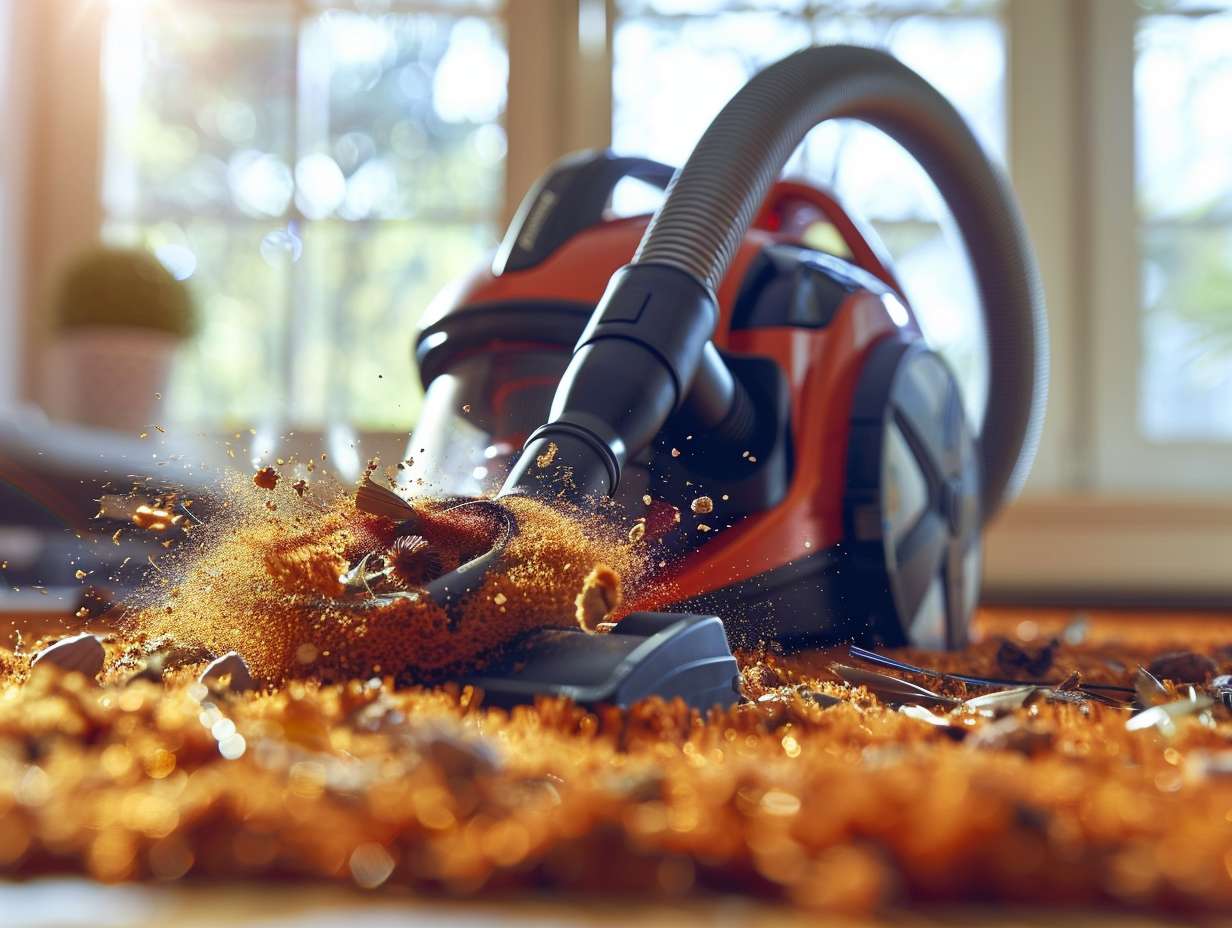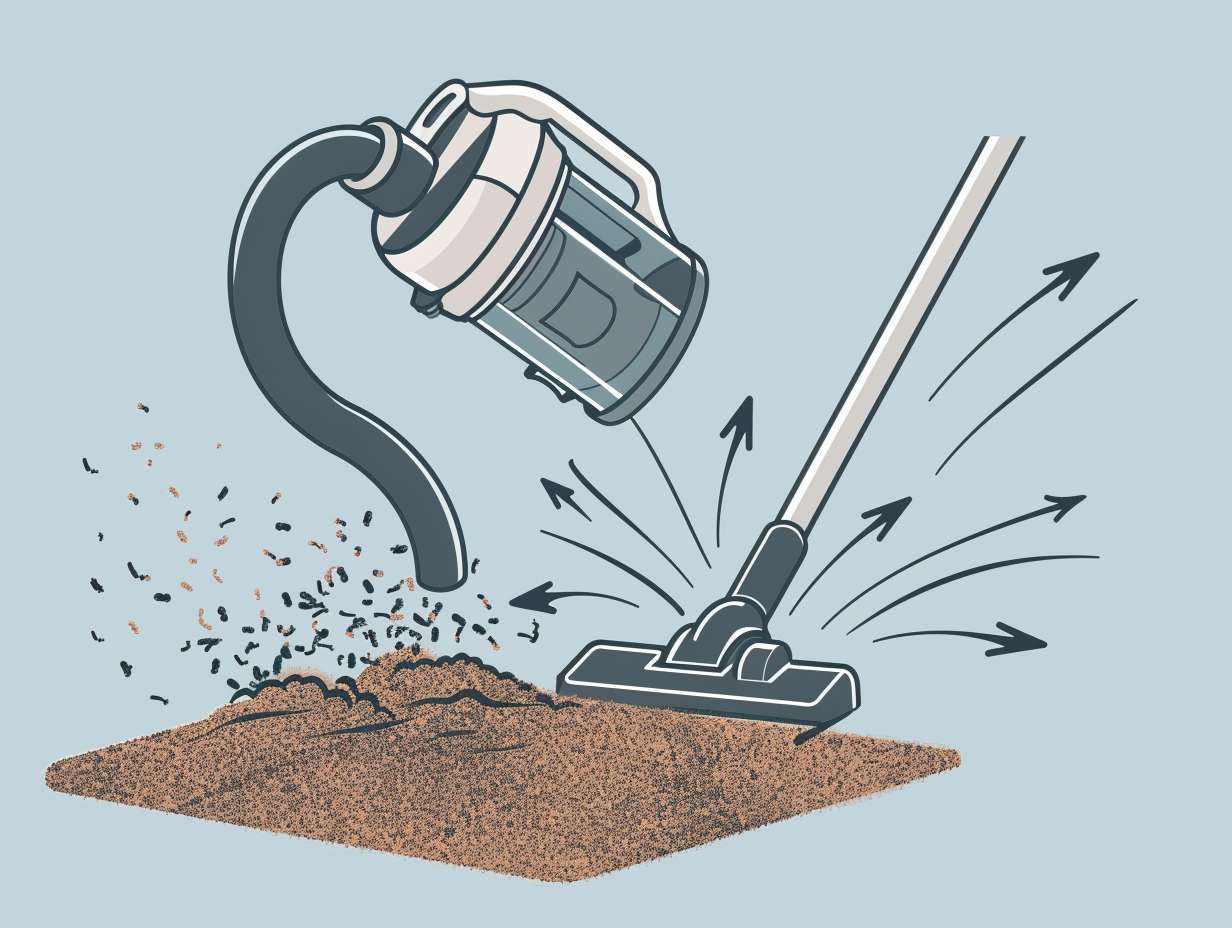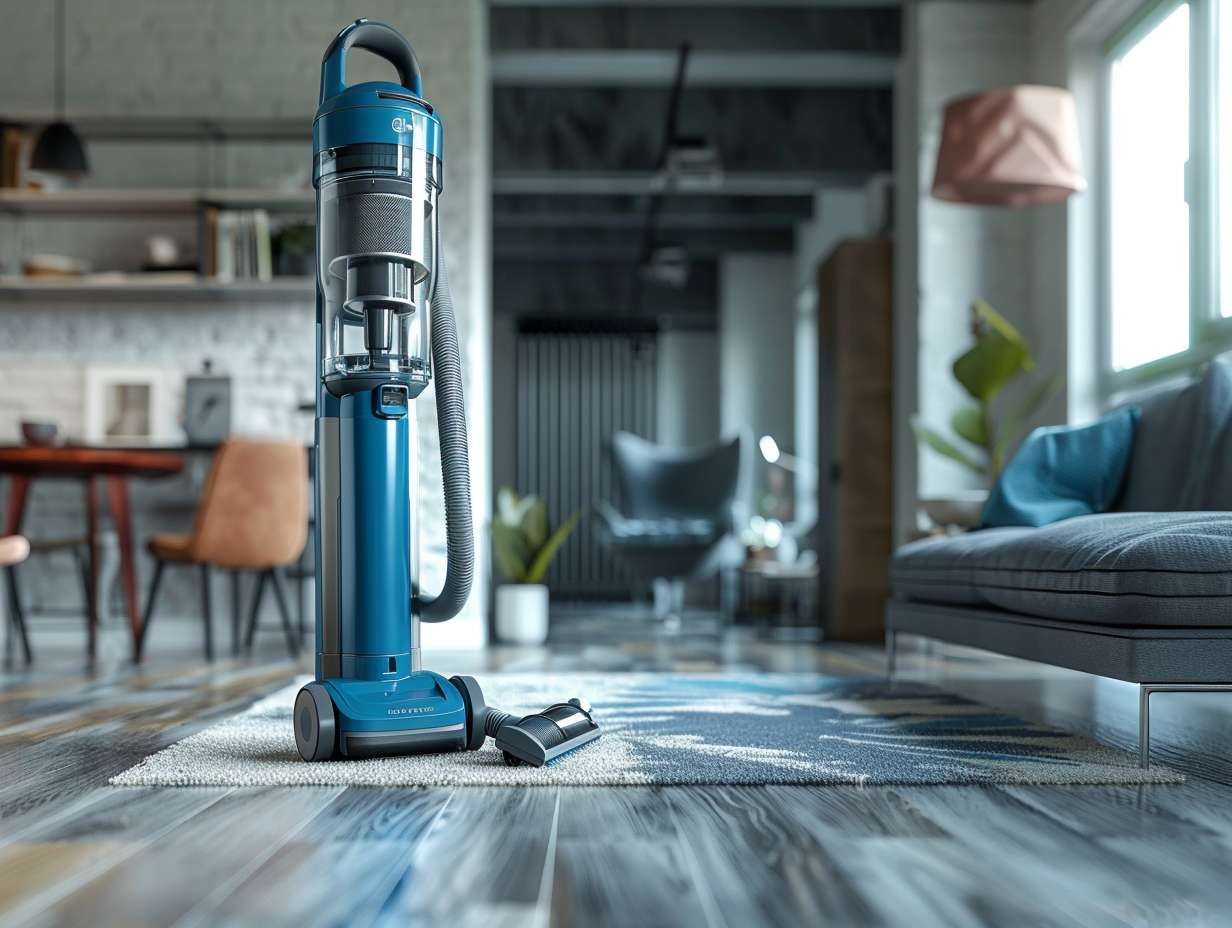
Why Are Vacuum Cleaners Called Vacuum Cleaners

Have you ever wondered if vacuum cleaners are truly named after creating a vacuum?
The answer may surprise you. The origins of this household essential’s name reveal an intriguing connection to its functionality.
As you explore the reasoning behind why vacuum cleaners are called vacuum cleaners, a fascinating journey into the history and innovation of cleaning technology awaits.
Stay tuned to unravel the mystery behind this seemingly simple yet impactful device.
Key Takeaways
- The term ‘vacuum cleaner’ originates from creating a partial vacuum to suck up dirt efficiently.
- Vacuum cleaners operate by generating suction power through a motor to create a pressure difference for cleaning.
- Evolution in design has led to sleek, lightweight, and cordless models with innovative attachments for effective cleaning.
- Vacuum cleaners have revolutionized cleaning practices, symbolizing modernity, efficiency, and convenience in the cleaning industry.
Origins of the Term
If you’ve ever wondered why vacuum cleaners are called vacuum cleaners, you’re not alone in your curiosity. The term ‘vacuum cleaner’ dates back to the early 20th century, a time when household cleaning tools were undergoing substantial innovation. Before the invention of electric vacuums, cleaning carpets and floors was a laborious task that involved beating rugs or using manual carpet sweepers.
The name ‘vacuum cleaner’ is derived from the function of the machine itself. When the early models of these devices were being developed, the concept of creating a partial vacuum to suck up dirt and debris was revolutionary. By creating a low-pressure environment inside the machine, dirt and dust could be effectively drawn into the cleaning apparatus, hence the term ‘vacuum cleaner.‘
Over time, the name stuck, and even as vacuum cleaner technology has advanced significantly, the fundamental principle of creating a vacuum to clean surfaces remains at the core of these devices. So, the next time you use a vacuum cleaner, you can appreciate the origins of its name and the innovative thinking that led to its creation.
Functionality Explained

The functionality of vacuum cleaners revolves around their ability to create a partial vacuum to effectively suction dirt and debris from surfaces. When you turn on a vacuum cleaner, it initiates a process where air is rapidly expelled, causing lower air pressure inside the cleaner compared to the surrounding atmosphere. This pressure difference leads to the suction force that pulls in dirt and debris through the cleaning nozzle.
Here are some key points to understand how vacuum cleaners work:
- Suction Power: The motor inside the vacuum cleaner generates suction power by creating a pressure difference.
- Filtration System: Most vacuum cleaners have filters to trap dust and allergens, preventing them from being recirculated into the air.
- Cleaning Nozzle: The design of the cleaning nozzle plays a critical role in directing airflow and maximizing suction efficiency.
- Dust Collection: Dirt and debris collected by the vacuum cleaner are stored in a dustbin or bag for easy disposal.
Evolution of Design
Through the years, vacuum cleaners have undergone significant transformations in their design to enhance efficiency and user experience. Initially, vacuum cleaners were bulky, heavy, and difficult to maneuver. However, with advancements in technology and design, vacuum cleaners have evolved into sleek, lightweight machines that offer powerful suction and versatile features.
One noticeable shift in vacuum cleaner design is the shift from corded to cordless models. Cordless vacuum cleaners provide greater freedom of movement and make it easier to clean hard-to-reach areas without being tethered to a power outlet. Additionally, the introduction of bagless vacuum cleaners has revolutionized the cleaning process by eliminating the need for disposable bags, reducing waste, and making maintenance more convenient.
Modern vacuum cleaners also boast innovative attachments and accessories that cater to specific cleaning needs. From motorized brush rolls for deep carpet cleaning to crevice tools for tight spaces, these attachments enhance the overall cleaning performance and efficiency of vacuum cleaners. The evolution of design in vacuum cleaners continues to prioritize user convenience and effectiveness in keeping homes clean.
Impact on Cleaning Industry

With its innovative features and improved efficiency, modern vacuum cleaner technology has greatly influenced the cleaning industry. These advancements have revolutionized the way cleaning is approached in both residential and commercial settings.
Here’s how modern vacuum cleaners have impacted the cleaning industry:
-
Increased Productivity: Modern vacuum cleaners are more powerful and efficient, allowing cleaning professionals to complete their tasks in less time.
-
Improved Air Quality: Advanced filtration systems in modern vacuums trap more dust and allergens, leading to cleaner air in indoor spaces.
-
Ergonomic Design: The ergonomic designs of modern vacuum cleaners have reduced strain on cleaning professionals’ bodies, leading to better health and increased job satisfaction.
-
Smart Features: Many modern vacuum cleaners come equipped with smart features like automatic sensors, scheduling capabilities, and app integration, streamlining the cleaning process and enhancing overall efficiency.
These factors combined have significantly raised the standards of cleanliness and convenience in the cleaning industry.
Cultural Significance
Exposing the cultural impact of vacuum cleaners reveals their unexpected role in shaping household routines and societal perceptions of cleanliness. Over time, vacuum cleaners have become emblematic of modernity and efficiency in maintaining a clean home. The invention of the vacuum cleaner revolutionized domestic chores, freeing individuals from the laborious task of manual carpet beating and sweeping. This shift in cleaning methods not only saved time but also influenced how cleanliness was perceived in society.
Moreover, vacuum cleaners have also played a significant role in gender roles within households. Traditionally viewed as a women’s responsibility, the introduction of vacuum cleaners helped challenge these stereotypes by making cleaning tasks more accessible to everyone. This shift contributed to changing societal norms around household chores and the division of labor.
Additionally, the cultural significance of vacuum cleaners extends beyond practicality. These devices have been featured in popular culture, symbolizing themes of order, control, and even obsession with cleanliness. From classic films to modern TV shows, vacuum cleaners have become ingrained in cultural references, further solidifying their place in shaping societal attitudes towards cleanliness and domestic life.
Conclusion
So, now you know why vacuum cleaners are called vacuum cleaners. They suck up dirt and debris using suction, hence the name.
Fun fact: did you know that the average American spends about 6 hours a week cleaning their home with a vacuum cleaner? That’s a lot of time saved thanks to this ingenious invention!
Disclaimer: Some information is provided through AI. Users should always conduct their own research and consult with qualified professionals before making any decisions.Affiliate information declaration: We may earn revenue from the products referred on this page and participate in affiliate programs.


